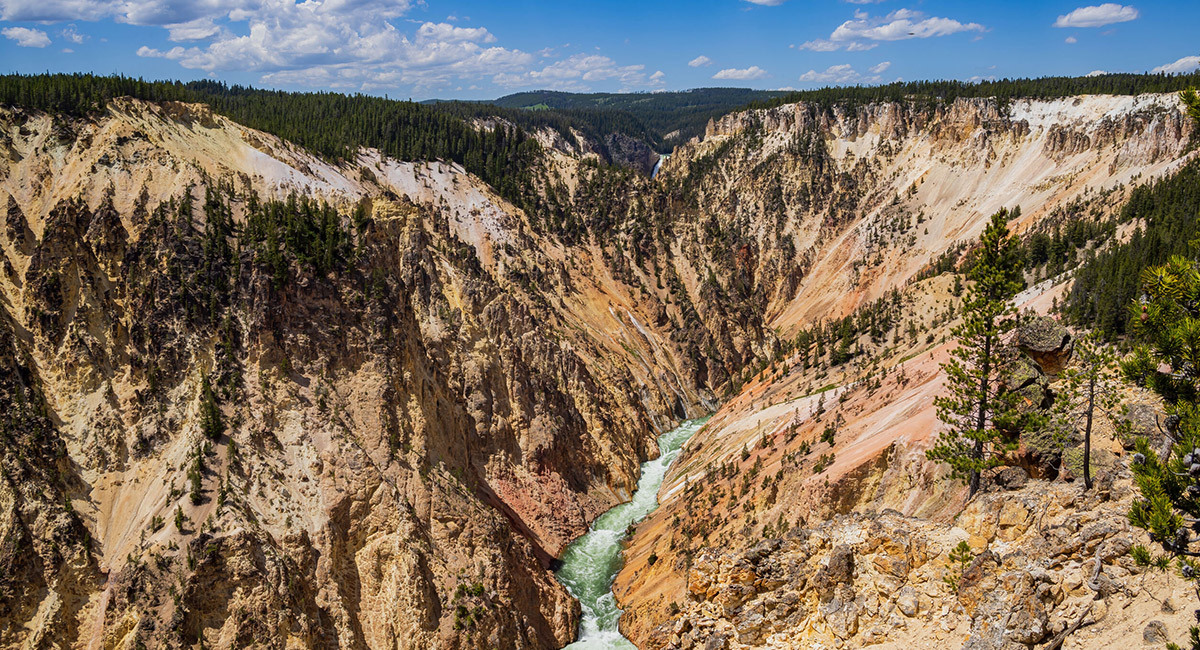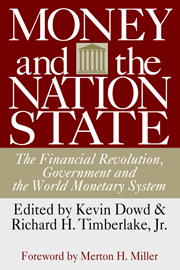Publicly-owned land, land owned by the government, represents a large, integral part of the U.S. economy. Over 40 percent of the total surface area of the United States is publicly-owned. For perspective, that area is slightly more than six times larger than the surface area of France. Publicly-owned lands are found in every county of the U.S., with the largest acreages in the Western states. For example, 80.1 percent of Nevada and an average of 45.9 percent of the 11 contiguous Western states are owned by the federal government. In Alaska, federal ownership is outsized, too, accounting for 60.9 percent of the state’s total. Of the remaining states, federal ownership accounts for 4.1 percent of their total.
Publicly-owned lands of this magnitude are America’s greatest anomaly. After all, the United States is perceived to be the citadel of capitalism, private ownership, and private enterprise. How did the United States end up with such a massive, anomalous inventory of publicly-owned land?
Initially, Americans displayed great ingenuity in amassing land. The acquisition of lands occupied by American Indians posed little problem. The Law of Capture was invoked. The advance of the armed frontier simply beat back the Indians, displacing them to reservations set aside by the federal government. But the federal government made other huge acquisitions. Between 1781 and 1868, approximately 2.5 billion acres were acquired: the Northwest Territory, the Louisiana Purchase from France, the Florida Purchase from Spain, the Gadsden Purchase from Mexico, the purchase of Alaska from Russia, and so on. These purchases represented an area 15.7 times the entire surface area of France.
Amassing Land and Selling It
The federal government not only acquired land on a massive scale, but it also disposed of a massive amount of newly acquired lands. In reality, the federal government was primarily in the land business. Indeed, it was the largest real estate operator in the world.
Initially, America’s leaders favored the disposal of all the federal government’s land holdings. The private ownership of land was viewed as an important element in America’s development strategy. America was relatively short in labor and capital, but long in land. So, land was seen as an abundant resource that should be privately-owned and used to fuel the country’s development.
Additionally, the nation’s founders, to a man, saw the public domain as a means to generate revenue via land sales. Indeed, one of the first actions taken by Congress during President George Washington’s administration was to pass the Public Debt Act of 1790. That Act declared that the revenue from land sales was to be used to discharge the federal government’s debts. From 1796 until the start of the Civil War in 1861, the fast-paced disposal of the public domain through federal land sales was highly successful. By 1862, the federal government had sold acreage equivalent to 67 percent of the public domain it held in 1802. These land sales constituted a major source of federal revenues. Over the period 1820-1860, receipts from land sales averaged 10.8 percent of total federal revenues. At the peak of their importance in 1836, revenues from land sales accounted for a stunning 48 percent of federal revenues.
After the Civil War, the disposal of publicly-owned lands continued. But, instead of sales, the public domain was disposed of via grants. These amounted to almost 600 million acres, a surface area 3.8 times larger than that of France. The largest of those disposals, 214 million acres, took place under the Homestead Act of 1862. The second-largest disposal was to the railroads. It amounted to approximately 129 million acres. States were the third largest recipients of land grants, receiving a little over 73 million acres. Another large distribution, approximately 64 million acres of so-called swamp grants, was also made to states.
The disposal of publicly-owned lands via sales and grants petered out with the passage of the Taylor Grazing Act of 1934. Perceiving a rush to homestead lands scheduled for inclusion in grazing districts, President Franklin Roosevelt withdrew virtually all of the remaining public domain lands from the possibility of transfer to private ownership. With that, the United States was left with a massive inventory of publicly-owned lands—a surface area over six times larger than France, a great American anomaly.
Government Mismanagement
These federal public lands are managed, in large part, by the National Park Service (NPS), the U.S. Fish and Wildlife Service, the Bureau of Land Management (BLM), the U.S. Forest Service (USFS), and the Department of Defense. The lands are, in fact, mismanaged. Rather than adding to the government’s coffers as the original land sales did prior to the Civil War, the federal lands are drains. While the publicly-owned lands were valued at $1.8 trillion in 2015 by the U.S. Department of Commerce (Bureau of Economic Analysis), they generate massive negative cash flows. Indeed, for the NPS, BLM, and USFS, aggregate total revenues only amount to 8.5 percent of their total expenditures.
In addition, when it comes to husbandry and ecology, the publicly-owned lands are in bad shape. BLM grazing lands are over-grazed and in poor condition, when compared to their private counterparts. The U.S. forestlands are also in much worse shape than private timberlands. National Parks are poorly maintained and receive low marks.
The mismanagement of publicly-owned property of any kind should not surprise anyone. After all, the management of government property is put in the hands of politicians and bureaucrats who pay no price for mismanagement. When it comes to publicly-owned lands, Adam Smith diagnosed the mismanagement problem in The Wealth of Nations (1776). He concluded that “no two characters seem more inconsistent than those of the trader and the sovereign,” since people are more prodigal with the wealth of others than with their own. In that vein, he estimated that lands owned by the state were only about 25 percent as productive as comparable private holdings. Smith believed Europe’s great tracts of crown lands to be “a mere waste and loss of country in respect both of produce and population.”
The Sagebrush Rebellion
Over time, those who used and relied on public lands in the United States for commercial purposes became squeezed out of the political-bureaucratic, non-market processes that determined the way public lands were to be used. For example, in 1940, ranchers comprised 100 percent of the representation on the National Public Lands Advisory Council. By 1980, their representation had dropped to 12 percent. Accompanying their reduced political access, there was a sharp reduction in the public range allocated to commercial grazing. Indeed, from 1959 to 1980 the capacity allocated to grazing declined by 40 percent.
Faced with these dramatic changes and continued threats, the political-bureaucratic processes for allocating public grazing lands were bound to break down. The first formal manifestation of the frustration came from Nevada, a state in which the federal government owns 80.1 percent of the land. In 1979, the Nevada State Legislature passed Assembly Bill 413 by a vote of 55 to 4, with one abstention. This bill declared that the State of Nevada was the legal owner of federal public domain lands within the state’s boundaries.
Nevada’s claim gave birth to the so-called Sagebrush Rebellion, the objective of which was to transfer federal lands to state ownership. The Rebellion quickly spread to other Western states, and was framed as a states-rights issue in which the rebels were attempting to transfer land ownership and control from Washington to their respective state capitals. By accomplishing this, the rebels thought they could once again dictate land-use policy.
With the election of Ronald Reagan in 1980 and the appointment of James Watt as Secretary of the Interior, the Sagebrush Rebels were buoyed up. Their enthusiasm was encouraged when Watt openly embraced their cause. With that, public lands became a hot-button issue.
At the time, I was serving as a senior economist on Reagan’s Council of Economic Advisers, where I was tasked with the public lands portfolio and was in charge of preparing a brief and policy recommendations for President Reagan. I argued that the Sagebrush Rebellion was fundamentally flawed. It would merely substitute one form of public ownership and political-bureaucratic processes for another via land grants from the federal government to state governments. As such, it offered no substantive solution for the problems inherent in government ownership and control of land and other resources.
“Privatize Those Lands”
I first publicly presented my recommendations to sell public lands at a Public Lands Council meeting in Reno, Nevada in September 1981. The title of my speech was “Privatize Those Lands.” It was eventually published in Reason Magazine. An interesting aspect of my speech turned out to be its title. As Mrs. Hanke reviewed a draft of my speech, she said that I had to change the language to say that it was “privatization” that I was advocating. At that time, that word wasn’t in Webster’s Collegiate Dictionary because it was a French word that Mrs. Hanke, who is a Parisian, had brought with her from France. We eventually convinced Webster’s to enter the word into Webster’s New Collegiate Dictionary. “Privatize” was entered in the 1983, 9th edition.
My Reno speech caused a stir. Secretary Watt was furious. He was adamantly opposed to privatizing public lands. Instead, he favored the transfer of federal lands to state governments—exchanging one form of socialism for another. Needless to say, I thought I was in deep trouble. Much to my surprise, Reagan instantly responded, taking my side. Better yet, he swiftly made my proposals his administration’s policy. In addition to Reagan’s endorsement, the proposal had the backing of one of the President’s best friends, who was none other than Senator Paul Laxalt of Nevada.
Senator Paul Laxalt
Here’s some of what Senator Laxalt had to say in a five‐page press release titled “Senator Laxalt on the Sale of Public Lands” (April 16, 1982):
Before we proceed any further, let me tell you where I stand. I believe a need does exist to sell some of our excess public lands. However, I intend to do all in my power to protect existing public land users from being “locked out.” To this end, I endorse a proposal developed by Dr. Steve Hanke, a senior economist on the President’s Council of Economic Advisers, that deals with the protection of existing grazing rights which, I believe, can serve as a model for protecting miners as well. Basically, Dr. Hanke has proposed that ranchers currently holding grazing permits be given the right to purchase, on a first refusal basis, the public grazing permits that they currently rent from the BLM.
Importantly, Laxalt knew the details of my proposal because we had spent a good bit of time together reviewing and fine‐tuning it. For Reagan, Laxalt’s “thumbs up” was important. That’s why the privatization of public lands received “top billing” in the President’s Budget Message for Fiscal Year 1983. That is when Reagan formally endorsed the privatization of public lands, and returned to a position taken by the Founders:
[W]e will move systematically to reduce the vast holdings of surplus land and real property, [since] some of this property is not in use and would be of greater value to society if transferred to the private sector. In the next 3 years we would save $9 billion by shedding these unnecessary properties while fully protecting and preserving our national parks, forests, wilderness and scenic areas.
Reagan’s Executive Order
In addition to his budget statement, the President issued Executive Order 12348 on February 25, 1982, which established a Property Review Board as part of the Executive Office of the President. The Board was directed to:
develop and review federal real property acquisition, utilization, and disposal policies;
advise the administrator of the General Services Administration (GSA) in setting standards and procedures to ensure that real property no longer essential be promptly identified and released for appropriate disposition;
review prior disposals of surplus property made at discounts for the “public good” to ensure that the property is being used and maintained for the purpose intended;
receive the reports made by or to the GSA on federal real property, placing particular emphasis on resolving conflicting claims on and alternate uses for property described in these reports;
establish a target amount of real property to be identified as excess for each executive agency.
The Executive Order also required the head of each federal agency to survey public property holdings and identify those that were underutilized or unused. Real property identified by the various agencies and the GSA as surplus was ordered to be promptly made available for its most beneficial use.
President Reagan’s privatization policies would have generated considerable benefits for the nation. For example, the following benefits would result from privatizing federal, publicly-owned commercial grazing lands.
1. The productivity of grazing lands would increase, over-grazing would be reduced, and the quality of grazing lands would be improved.
2. Privatization would eliminate the government’s negative cash flows from grazing lands. This would obviously benefit all U.S. taxpayers, who must now pay taxes to support the federal government’s retention of public grazing lands.
3. Current federal revenues would be generated and earmarked to reduce the national debt. Hence, the liabilities we bequeath to future generations would be reduced.
4. State and local tax bases would be created. Western dependence on in-lieu payments from Washington would be eliminated.
Similar benefits would be generated if publicly-owned commercial timberlands were privatized.
Unfortunately, President Reagan’s embrace of the Founding Fathers’ vision of what to do with the public domain was stillborn, and ended up as a missed opportunity.










